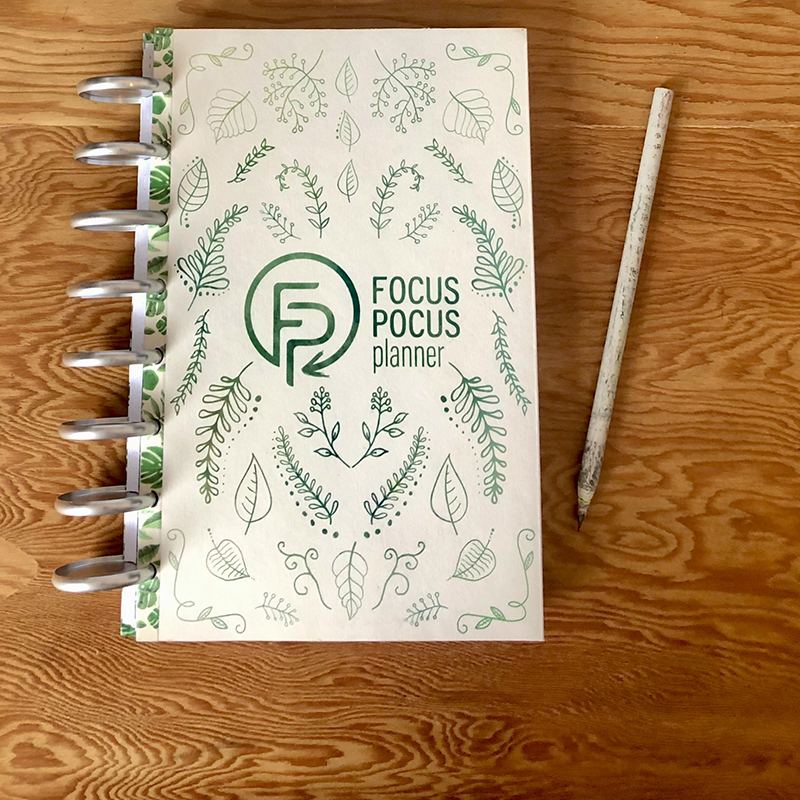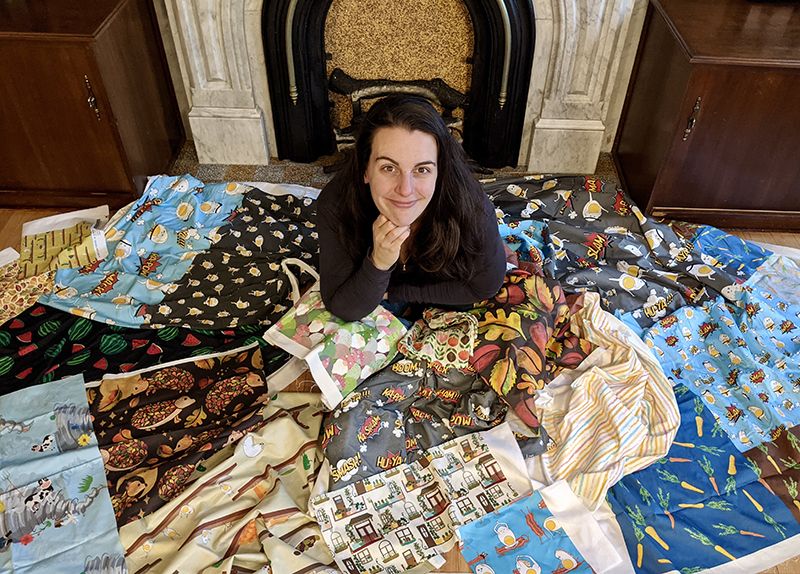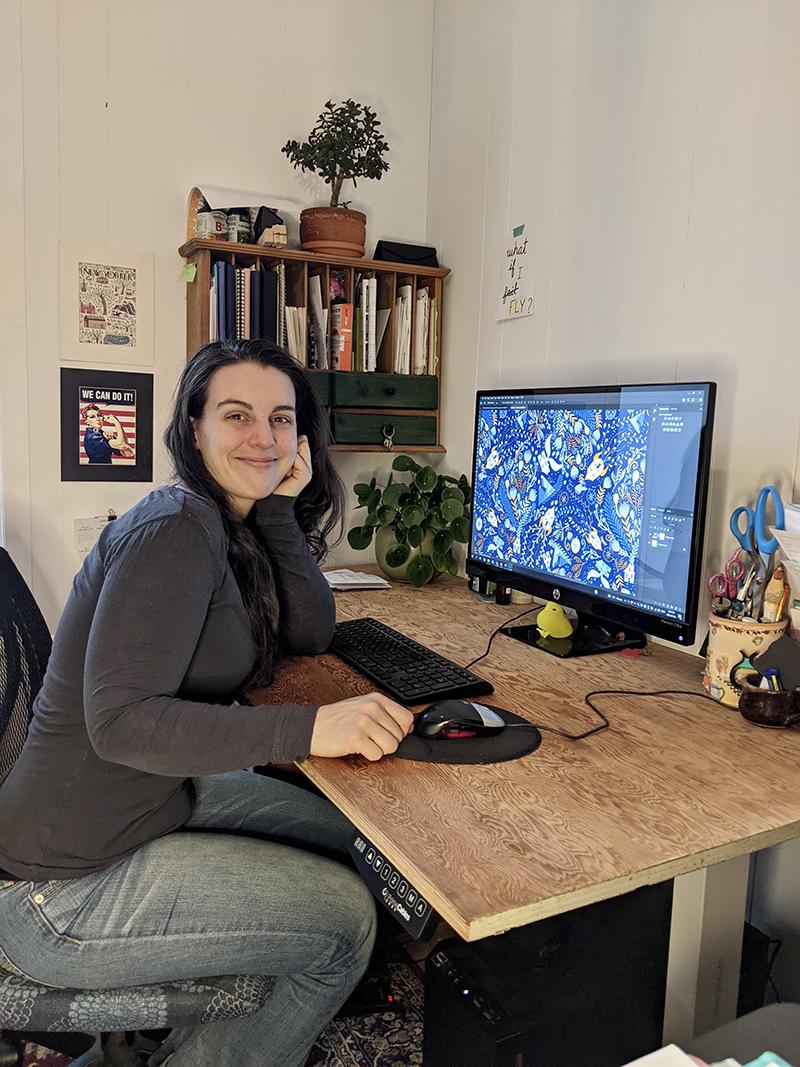This story is one of a series focusing on local makers. In 2022, The Review will be finding out what local entrepreneur-makers are creating, will explore the how-they-do-it aspect of what they do and of course, we will be asking them why they do what they do. This week, we speak with a new-to-Vankleek Hill resident to find out what she is making. Since moving to Vankleek Hill, Jen Ashfield has become a volunteer with the Vankleek Hill Farmers’ Market and more recently, was elected secretary of the Vankleek Hill Business and Merchant Association.
This story is about one young woman’s creativity and the many ways it shows up in her entrepreneurial endeavours as well as being an avenue for her to do what makes her feel alive. While the pandemic has made many people change career paths, Jen Ashfield’s direction came about pre-pandemic–after a workplace accident while she was a welder.
The sudden work stop made her think about how her priorities – and how she was spending her time. It was also at this point that she and her partner sold their home in nearby Quebec and relocated to Vankleek Hill to be closer to her partner’s business in Vankleek Hill’s Business Park. As he took on more responsibilities, he had to be present at the Vankleek Hill location. The move worked out for both of them, she says.
Describing herself as someone who has always been creative, Ashfield loves working with her hands and creating. She is an avid gardener, photographer, loves to knit and sew and she loves design, too. In the past year or so, she has taken online training to learn how to use design software.
It was quite by happenstance that Ashfield found herself looking for a day planner that contained one day on a full page.
She says she quickly realized why such a thing was rare.
“There are 365 days in a year so a product like that would be huge,” says Ashfield. She turned her energies to designing the perfect planner and printed and assembled them herself, using discbinding. Discbinding uses metal discs to hold specially cut pages in place; pages are easy to add and remove. Ashfield thought the system would be ideal for holding only the pages that one needs and adding and removing as needed.
“I thought I had everything after I added my priorities pages and a budget tracker,” Ashfield says. But she realized there might be more that others would need–things she had not considered.
Her background in agricultural and environmental engineering (she specialized in composting), meant that she kept environmental concerns top of mind. The paper she uses is made from 100% recycled paper and she is quick to point out that her Focus Pocus Planner does not contain any plastics. The discs are re-usable, of course.
To take it one step further, the planners are customizable, so one can order the number of pages one wants and the type of pages (one day per page or one week per page, for example). “I wanted to minimize the impact and eliminate the kind of planner where you end up not using half of the pages. You build your own planner and you don’t buy what you won’t use,” Ashfield said.

This is the Focus Pocus Planner, with the reusable disc system holding all of the pages together.
The made-to-order model isn’t a given in an economy which usually manufactures a product and then works hard to sell that product. A focuspocus planner is kind of made by the customer, and Ashfield wanted it that way. Ashfield launched her Focus Pocus Planner last year and was at the Vankleek Hill Farmers’ Market for a few Saturdays to launch the product locally.
But that’s not all. If you think that someone who invents a time planner could find time to do even more creating, you would be right.
Surface pattern design
In the past several months, Ashfield has moved on to surface pattern design. What precisely is that? It is designing the patterns you see on fabric, on wallpaper, on packaging, clothing, etc.
From studying engineering software and then thanks to a foray into graphic design to make labels for Maïkan Nature (an acquisition of her partner’s company), Ashfield says she fell down a rabbithole.
“This was beyond sewing, knitting and dying,” Ashfield says. “I am having a lot of fun with it and it is exhilarating, but it is frightening! There is no limit,” she added.
Thanks to websites that enable her to upload her designs (like Spoonflower and Redbubble), people can purchase her fabric as well as products made from her fabric. Spoonflower, for example, offers visual renderings of products like pillow covers, duvet covers and more using a designer’s design but also offers several types of fabric on which each design can be printed.

Here are a few of Jennifer Ashfield’s designs.
From drawing shapes and using her tablet, to taking pictures of her watercolour images and refining them using Photoshop and Illustrator, Ashfield was off and running.
Using software, she rasterizes the images –or motifs – and creates a kind of sample square of a pattern that can be repeated over a larger area. This is where it gets even more interesting–and challenging. Those arrangements of motifs have to be organized so that the edges are seamless. Example: If there is half of a lemon at the left edge of the square design, then a matching half has to be on the right-hand side of that sample swatch. The biggest effort goes into making a pattern a true repeat, Ashfield explained.

You can see the watercolour image (at left) that shows the beginning of a design before it Jennifer Ashfield photographs it in order to digitize it and use it to create a digitized design.
“The amazing thing is that surface design is everywhere you look. It’s on clothing, duct tape, wrapping paper, product packaging – truly everywhere,” she notes. And so, she calls surface pattern designing a ‘pragmatic’ art.
“I can’t ever see a day when we will not want clothing and have a need for certain items–the need for this type of design is limitless,” she added.
She is excited when she shares that one can create a surface pattern design and order everything from a dress to a wallet with your own design on it. (Ashfield recently entered an online design contest on the Spoonflower website which had as its focus ‘ditsy’ designs, which are designs featuring miniature motifs.)
We saved the best question for last: What drives you to create?
“I think creating things is when I feel the most alive–that, and being with animals, nature and life, or living things. Growing food with my hands, creating things with my hands–doing this gives you an appreciation of the value of things,” Ashfield says.
But Ashfield asserts that beyond the value of the actual time is the skill and the years of knowledge that one needs to make something.
“There is an infusion of your life and experience into whatever you make,” Ashfield ended.
* * * * *
As one would expect, Ashfield is organized. Here are links to her website for focuspocusplanner and to her design initiatives.
Focus Pocus Planner: www.focuspocusplanner.ca
Facebook: Handle -> @focuspocusplanner
URL: https://www.facebook.com/focuspocusplanner/
Instagram: Handle -> @focuspocusplanner
URL: https://www.instagram.com/focuspocusplanner/
YouTube: https://www.youtube.com/channel/UCOXHllxPmvV9IignuIQXhuw
Jen Ashfield Design: www.jenashfield.com
Facebook: Handle -> @jen.ashfield.design
URL: https://www.facebook.com/jen.ashfield.design/
Instagram: Handle -> @jen.ashfield
URL: https://www.instagram.com/jen.ashfield/
Spoonflower: https://www.spoonflower.com/profiles/jenashfieldart
Redbubble: https://www.redbubble.com/people/Jen-Ashfield/shop

Designer Jennifer Ashfield is surrounded by fabric swatches with patterns that have all been designed by her. Photo: Emilia Vinette


